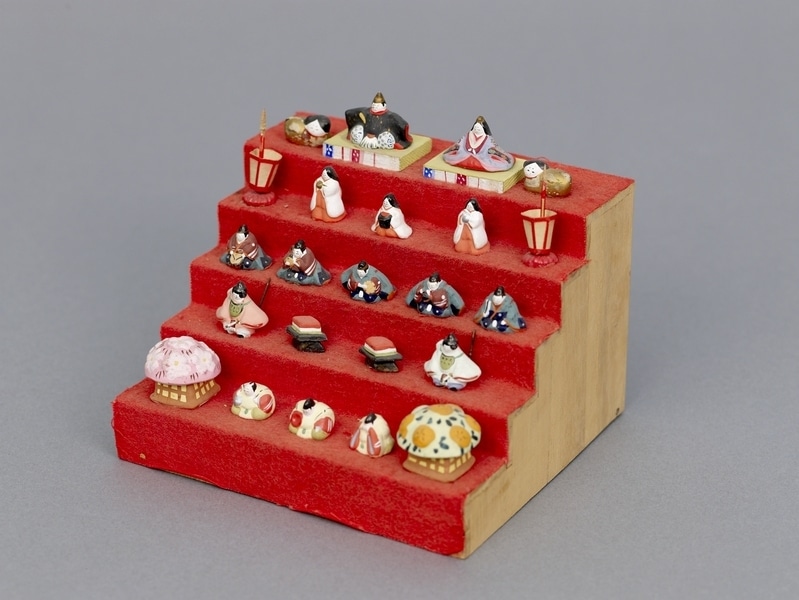Doll Item Number: N2.899 from the MOA: University of British Columbia


Description
Hina doll set. Polychrome figures on tiers covered in red are a set of hina ningyō (雛人形; hina dolls) representing the emperor, empress, attendants, and musicians in traditional court dress of the Heian period. There are five steps. Top tier: two figures sitting on a rectangular platform are dairi bina (内裏雛), representing the emperor and empress with another figure known as inubako (犬筥, “dog box”) to their outside side. Second tier: a seated figure in the middle with a standing figure at either sides and a lamp at each end are three court ladies known as san’nin kanjo (三人官女). Third tier: five seated figures are five male musicians known as gonin bayashi (五人囃子). Three seated figures in the middle hold drums, one seated figure holds a flute and another, a singer holds a fan. Fourth tier: two seated figures are two ministers known as udaijin (右大臣, minister of the right) and sadaijin (左大臣, the minister of the left) with two hishimochi (菱餅; diamond-shaped rice cakes) on hishidai (菱台; diamond-shaped stands) in between. Fifth tier: three seated figures between sakura cherry blossom and tachibana citrus trees are helpers or protectors of the emperor and empress known as shichō (仕丁) consisting of nakijōgo (泣き上戸; crying drinker), okorijōgo (怒り上戸; angry drinker) and waraijōgo (笑い上戸; laughing drinker).
History Of Use
Hina ningyō 雛人形 (hina doll set). The set is displayed for hinamatsuri (雛祭り; Doll Festival or Girls’ Day), celebrated on March 3 in Japan. Hinamatsuri is intended to pray for the health and happiness of young girls.
What
Where
- Holding Institution
- MOA: University of British Columbia
- Made in
- Japan
Other
- Condition
- fair